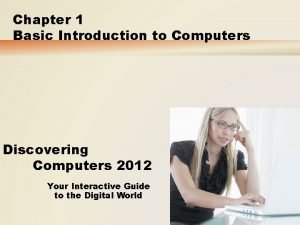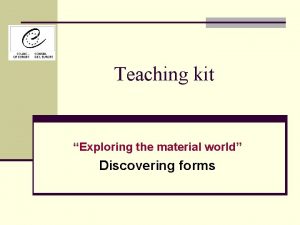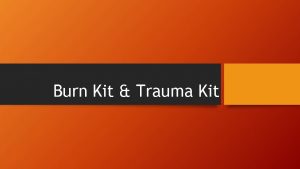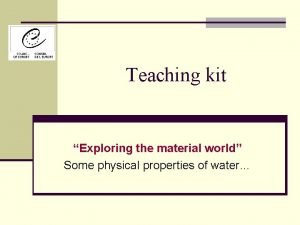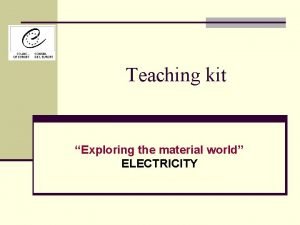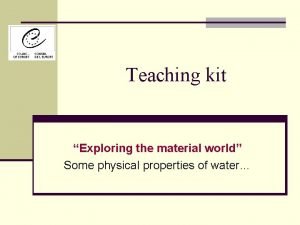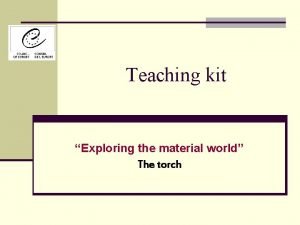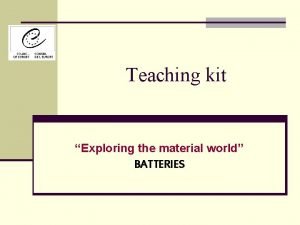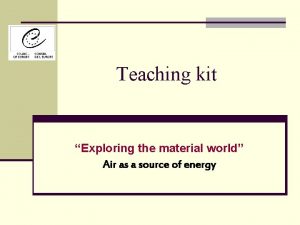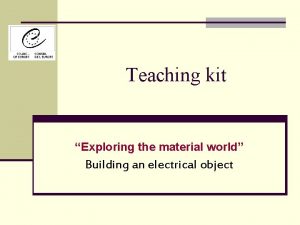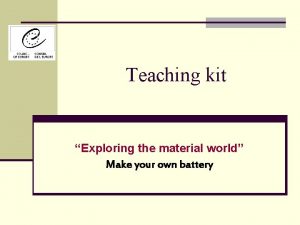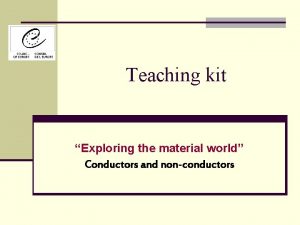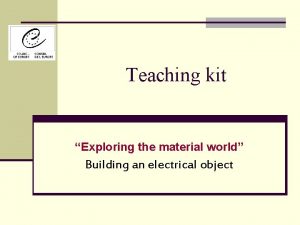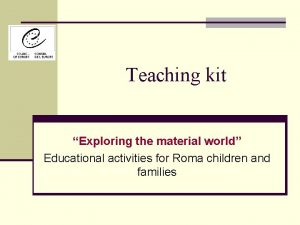Teaching kit Exploring the material world Discovering forms
















- Slides: 16

Teaching kit “Exploring the material world” Discovering forms

Triangle, square, circle and other forms… By widening the range of observation and encouraging comparison, the teacher helps the children to distinguish various types of criteria (form, size, mass, capacity etc) and to establish classifications and

Activity 20 : Triangle, square, circle and other forms… n This activity requires supervision. n Children can repeat the experiments on their own after working on them with the mediator.

Exploring the material world: Discovering forms Sheet n° 20 Activity 20 : Triangle, square, circle and other forms… side 1 Circle Rectangle Square Triangle Squares ? Circles ? Triangles ? Rectangles ?

Exploring the material world: Discovering forms - Can Sheet n° 20 you name these forms? circle rectangle square triangle Squares ? Circles ? Triangles ? Rectangles ?

Exploring the material world: Discovering forms Sheet n° 20 - Show me the circles… and the squares… Circle Rectangle Square Triangle Squares ? Circles ? Triangles ? Rectangles ?

Exploring the material world: Discovering forms Sheet n° 20 - Count the triangles that make up Isidor and note down your observations in the table… Circle Rectangle Square Triangle Squares ? Circles ? Triangles ? Rectangles ?

Through various games, they can be encouraged to form naming or recognition strategies

The games can lead them to differentiate and classify objects according to their shapes, with particular reference to their outline: straight, curved, flat, rounded etc.

Exploring the material world: Discovering forms Sheet n° 20 Next stage: Counting and associating…

Exploring the material world: Discovering forms Sheet n° 20 How many shapes do you need to make an Isidor rabbit? Side 2 How many… Triangles ? Squares ? Circles ? Rectangles ? ?

These games can also lead to the reproduction of assemblies of simple shapes; - to a comparison of objects according to size…

Exploring the material world: Discovering forms Sheet n° 20 Next stage : How many… Side 3

Exploring the material world: Discovering forms Sheet n° 20 Next stage : How many… Side 4

NB ! Although the names of some shapes are introduced (square, triangle, rectangle, circle), the main aim is not to learn mathematical vocabulary.

At the end of a period of supervised activity, the child should be able to… 1. differentiate and classify objects according to characteristics related to their shape; 2. recognise, classify and name simple forms : square, triangle, circle; 3. reproduce an assembly of simple forms on the basis of a model (puzzle, tiling, assembly of solids).
 Ip teaching kit
Ip teaching kit Exploring the religions of our world pdf
Exploring the religions of our world pdf Exploring the world of business and economics
Exploring the world of business and economics Exploring the religions of our world chapter 2 pdf
Exploring the religions of our world chapter 2 pdf Exploring the religions of our world chapter 1 pdf
Exploring the religions of our world chapter 1 pdf Exploring the world of work
Exploring the world of work Exploring world history
Exploring world history Exploring religions chapter 6 large
Exploring religions chapter 6 large Exploring culture: world religions
Exploring culture: world religions Exploring the religions of our world
Exploring the religions of our world Discovering unassigned duties
Discovering unassigned duties Benjamin latrobe
Benjamin latrobe Discovering computers 2018 ppt download
Discovering computers 2018 ppt download Discovering computers 2016
Discovering computers 2016 Discovering computer
Discovering computer Self motivation explain
Self motivation explain Pure substances
Pure substances














